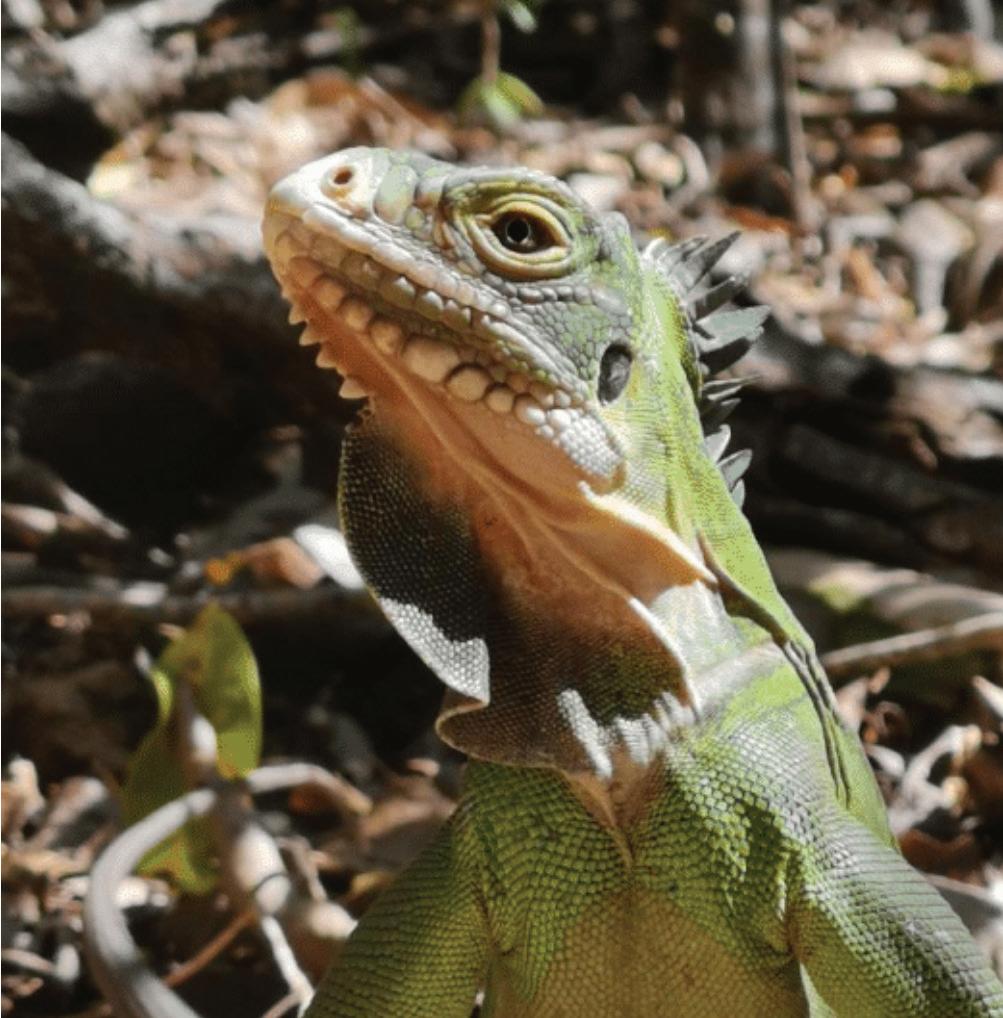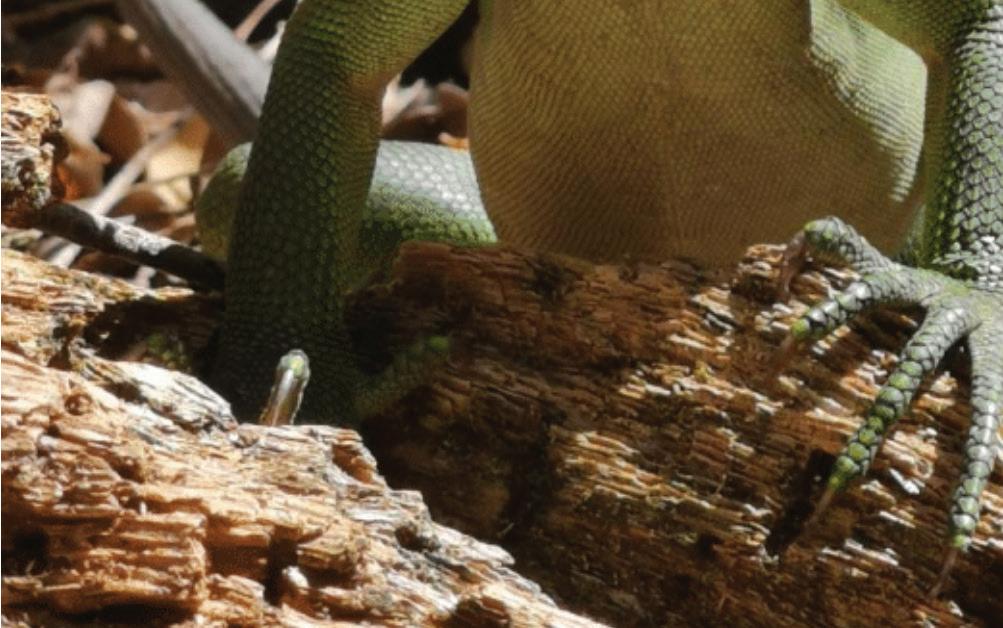
2 minute read
EMERGENCY GRANT | $4,000 AWARDED Improving Rapid Response Eradication of Invasive species on St. Eustatius

By Tomas Cornwell, St. Eustatius National Parks Foundation
Advertisement
Overview
The IIF Emergency Grant enabled us to respond to a possible urgent conservation threat to the native Lesser Antillean Iguana (Iguana delicatissima), while also providing the opportunity for a postgraduate student to contribute to our efforts and to help develop a new monitoring plan for invasive iguanas on St. Eustatius. If Common Green Iguanas (Iguana iguana) or hybrid iguanas were present on the island, we would need to work quickly to validate these claims and ensure these individuals were caught and removed from the population.
Accomplishments
Survey for non-native iguanas

We purchased 10 Havahart small mammal traps to survey key areas around the island following reports of a Common Green Iguana or hybrid sighting. Traps were set in different locations over a five-month period to sample iguana populations. No Common Green Iguana or hybrid iguanas were captured during this period. In addition to trapping, with the support of our student, Jordan Vermeulen (seen at right), we began conducting night surveys to assess population density of Iguana delicatissima across the island.
Capture and remove introduced/hybrid iguanas
During the project, only one invasive Common Green Iguana was reported, captured, euthanized, and a DNA sample was taken for later analysis. This individual was thought to be a hatchling, an unintentional introduction resulting from transport of building materials in the harbor. Night patrols in the area revealed no additional animals. This finding initiated plans to include four sites of new development and building supply/import businesses as part of our monitoring procedures.
Establish an ongoing monitoring program
This project facilitated the development of a new monitoring procedure, incorporating new survey sites and the use of traps to sample the island for the presence of non-native iguanas. Since the departure of our project student, we have continued to carry out native iguana population sampling, along with night patrols and occasional trap setting across the island.
Further strengthening
of public awareness concerning threats to endemic, threatened species
During her time with us, our research student Jordan spent time raising awareness during fieldwork and helped develop materials for social media, pointing to existing information on invasive species, how to identify them, and who to reach out to in the event of a sighting.
Jordan produced a presentation as part of her thesis project, which can be used to help raise awareness.
Looking ahead
The project allowed us to temporarily increase capacity to respond to reports of invasive iguana sightings and conduct much-needed rapid assessments of whether these animals exist on the island. Having the traps will also support long-term monitoring, and we plan to sample other potential invasive species on St. Eustatius, such as predators of hatchlings, including cats and rats. Ultimately, we need to explore further opportunities to increase staffing to continue long-term monitoring.













